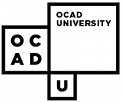This project makes VRML courseware accessible to students with disabilities, thereby providing a cost effective, flexible and powerful method of teaching spatially and graphically based curriculum to students who are blind, or students who require tactile input in orderto process new concepts.
Adding Feeling, Audio and Equal Access to Distance Education
A CANARIE HEN'97 undertaking, in collaboration with:
Presently, Internet or Intranet delivered curriculum does not simulatethe experience of touching and manipulating objects or environments (referredto as 'haptics'). This restricts the number of subjects which can be effectivelytaught, and the types of students who can access the curriculum. This educationalproject endeavors to develop software applications which will make it possibleto deliver curriculum which can be touched, manipulated and heard overthe Internet or an Intranet. Both the necessary software tools and exemplarycurriculum modules will be developed. Developments will be based upon theISO standard for 3D web graphics - VRML (Virtual Reality Modeling Language),and a haptic API developed by Haptics Technology Inc.
The project is innovative in that it will add haptic and multimodalcapabilities to VRML. This project will make VRML courseware accessibleto students with disabilities, thereby providing a cost effective, flexibleand powerful method of teaching spatially and graphically based curriculumto students who are blind, or students who require tactile input in orderto process new concepts. The project will also provide risk free learningenvironments for students learning manual skills (e.g. physical therapy)or skilled trades.
A paper on this topic was presented at CSUN 1999.
For more information, contact This email address is being protected from spambots. You need JavaScript enabled to view it. or This email address is being protected from spambots. You need JavaScript enabled to view it.




